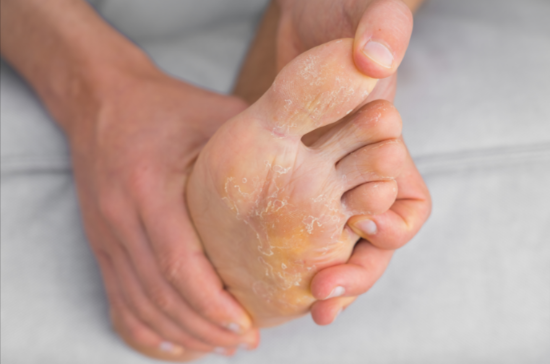Urea for Toenail Fungus: Effective and Easy Treatment?
Contents
- 1 What is Toenail Fungus?
- 2 The Role of Urea in Toenail Fungus Treatment
- 3 How Urea Works for Toenail Fungus?
- 4 Urea in Toenail Fungus Treatments: The Evidence
- 5 How to Use Urea for Toenail Fungus?
- 6 Other Treatment Options for Toenail Fungus
- 7 When to See a Doctor?
- 8 Conclusion: Is Urea a Good Solution for Toenail Fungus?

Toenail fungus, or onychomycosis, is a persistent and often embarrassing condition that affects millions of people worldwide.
It can cause nails to discolor, thicken, and even crumble. While there are numerous treatments available, from prescription medications to over-the-counter creams, many people turn to home remedies in search of a simpler, more natural solution.
One such remedy gaining attention is urea. But can urea help treat toenail fungus? Let’s take a deep dive into this intriguing option and explore whether it could be a solution to your fungal nail problems.
What is Toenail Fungus?
Toenail fungus is a fungal infection that typically begins as a small white or yellowish spot under the tip of your toenail.
Over time, it can spread deeper into the nail, causing it to thicken, discolor, and become brittle. It’s often caused by dermatophytes (fungi that live on the skin and nails), but other fungi like yeasts and molds can also be responsible.
The condition thrives in warm, damp environments, making your feet especially in shoes a perfect breeding ground for these fungi.
The Role of Urea in Toenail Fungus Treatment
Urea is a naturally occurring compound that is found in urine and is also synthesized for use in skin-care products. In the context of toenail fungus, urea is typically used as a keratolytic agent.
This means it helps break down the keratin in the nails, which is the tough protein that forms the nail’s structure.
By softening and dissolving the nail, urea makes it easier for other treatments to penetrate deeper into the infected area and work more effectively.
But does this mean urea is a miracle cure for toenail fungus? Let’s explore the science behind this compound and its potential benefits.
How Urea Works for Toenail Fungus?
Urea is commonly used in the form of urea creams, ointments, or gels, which are applied directly to the affected area. When it comes to toenail fungus, urea helps in the following ways
Softens Thickened Nails
- One of the most noticeable symptoms of toenail fungus is the thickening of the nail. Urea helps soften these thickened nails, making them more flexible and easier to trim or remove.
- This is important because thick nails can trap fungus and debris, making it harder for antifungal treatments to penetrate and do their job.
Improves Absorption of Other Treatments
- Urea’s ability to soften the nail also helps enhance the effectiveness of antifungal creams or medications.
- Breaking down the hard outer layer of the nail, allows these treatments to reach the infection beneath the surface more effectively.
Helps Exfoliate the Nail
- Urea acts as an exfoliant, helping to remove dead skin and nail tissue. This exfoliating action can help remove the infected, damaged nail layers, allowing the healthy nail to grow back more quickly.
Hydrates the Nail and Skin
- Urea is a humectant, which means it attracts moisture to the skin. This can be beneficial for the skin surrounding the toenail, preventing cracks and dryness, which could lead to secondary infections.
Urea in Toenail Fungus Treatments: The Evidence
While urea is often touted as a helpful agent for toenail fungus, it’s important to note that it doesn’t treat the fungus itself.
Urea helps manage the symptoms and improve the condition of the nail, but it’s not an antifungal agent.
This means that while urea may assist in the process of dealing with the infection, it should be used in conjunction with other proven antifungal treatments.
There is limited research on the direct impact of urea on toenail fungus, but it is frequently included in topical treatments designed to treat thick nails caused by fungal infections.
Some studies and anecdotal reports suggest that urea-based creams can help soften and break down the nail to facilitate better absorption of antifungal agents, but more studies are needed to fully confirm its role in curing fungal infections.
How to Use Urea for Toenail Fungus?
If you’re interested in trying urea to help manage toenail fungus, here’s a simple guide on how to incorporate it into your treatment routine:
- Choose a Urea Cream or Ointment: Look for a urea-based product specifically formulated for use on nails. These products typically contain between 10-40% urea, which is effective for softening nails. Be sure to read the instructions carefully to ensure you’re using the correct strength for your needs.
- Prepare Your Toenails: Soak your feet in warm, soapy water for 10-15 minutes to soften the nails further. Gently trim any thickened or damaged parts of the nail to remove any excess fungal buildup.
- Apply the Urea Cream: Once your nails are clean and dry, apply a thin layer of urea cream directly to the affected nail(s). Make sure to cover the surrounding skin as well, especially if it’s dry or cracked.
- Cover the Nail: You may want to cover the treated toenail with a bandage or clean sock to keep the area moisturized and allow the treatment to absorb more effectively.
- Follow Up with Antifungal Treatment: After applying the urea cream, you can use an antifungal treatment (such as clotrimazole, terbinafine, or a prescribed medication) to target the underlying infection.
- Repeat Regularly: Continue applying the urea cream and antifungal treatment as directed, usually once or twice a day, until you see improvements.
Other Treatment Options for Toenail Fungus
While urea can be a helpful tool in managing overall toenail fungus, it should be used as part of a comprehensive treatment plan.
- Topical Antifungal Creams or Ointments: These are the most direct methods of treating the infection itself and should be applied after using urea-based products.
- Oral Antifungal Medications: For more severe cases, a doctor may prescribe oral antifungal medications like terbinafine or itraconazole to target the fungus from within.
- Laser Therapy: Some doctors offer laser treatments designed to eliminate toenail fungus by targeting the infection with focused light.
When to See a Doctor?
If you’ve been struggling with toenail fungus for a while and at-home treatments aren’t helping, it’s important to consult a healthcare professional.
They can offer stronger treatments and ensure no underlying health issues are contributing to your fungal infection.
Conclusion: Is Urea a Good Solution for Toenail Fungus?
Urea can be a helpful part of a toenail fungus treatment routine, especially when used to soften thickened nails and improve the absorption of antifungal treatments.
However, it’s not a cure for the infection itself. To effectively treat toenail fungus, urea should be combined with proven antifungal therapies and used as a supportive tool.
If you’re dealing with persistent toenail fungus, consider consulting a doctor to determine the best treatment plan for you.



